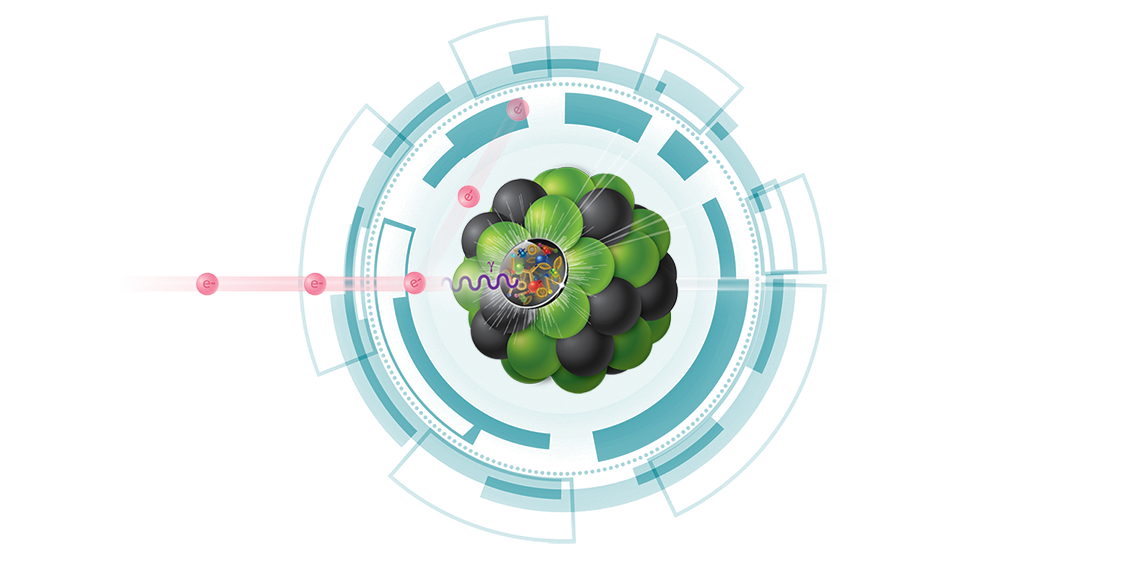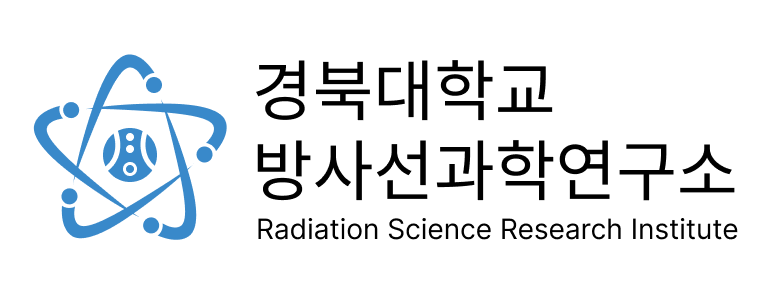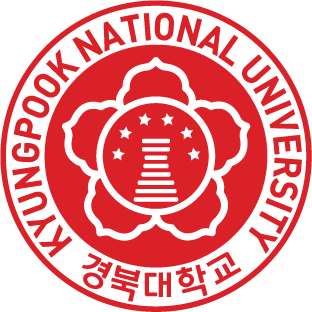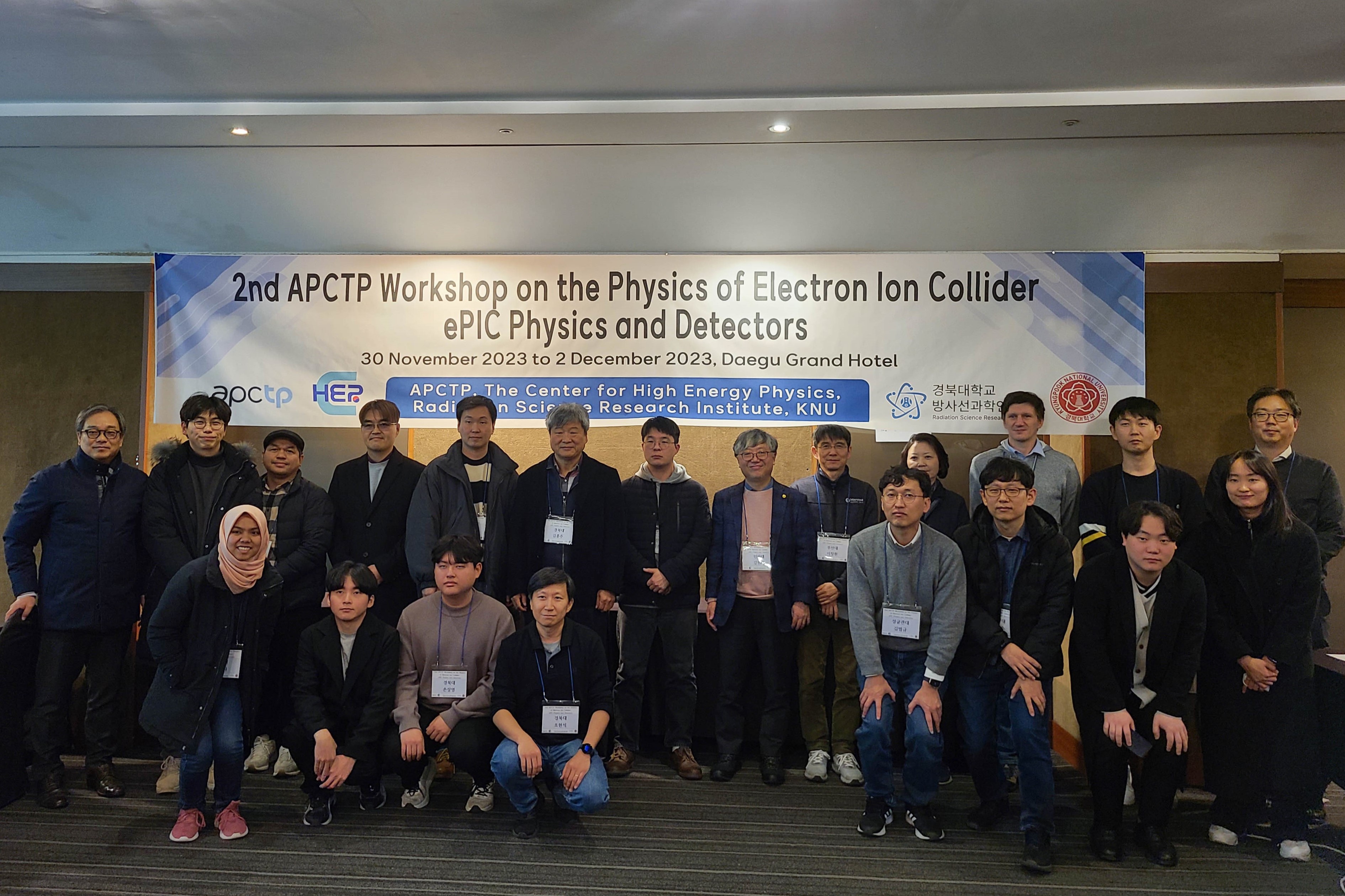2nd APCTP Workshop on the Physics of Electron Ion Collider: ePIC Physics and Detectors
Pine Hall
Daegu Grand Hotel

The first Workshop on the Physics of Electron Ion Collider was organized by Prof. Kyungseon Joo and the late Prof. Yongseok Oh, and was held at the Howard Johnson Incheon Airport Hotel in November 2022.
The 2nd Workshop on the Physics of Electron Ion Collider will be held at the Daegu Grand Hotel, in Daegu, Republic of Korea, from Nov 30, 2023 to Dec 2, 2023.
The Electron-Ion Collider (EIC), planned to be built at the U.S. Department of Energy's (DOE) Brookhaven National Laboratory (BNL), in partnership with Thomas Jefferson National Accelerator Facility (Jefferson Lab), will be the most advanced tool for studying some of the deepest unexplored recesses of the atom.
The EIC will be a particle accelerator that collides electrons with protons and nuclei to produce snapshots of those particles’ internal structure—like a CT scanner for atoms. The electron beam will reveal the arrangement of the quarks and gluons that make up the protons and neutrons of nuclei. The force that holds quarks together, carried by the gluons, is the strongest force in Nature. The EIC will allow us to study this “strong nuclear force” and the role of gluons in the matter within and all around us. What we learn from the EIC could power the technologies of tomorrow.
The ePIC Collaboration was formed in 2022 to realize the physics program at the first detector of the Electron-Ion Collider.
Topics for this workshop could also include topics in heavy-ion physics, high-energy physics, and any other physics that might have connections to the EIC and its detector and accelerator technologies. We will also discuss international collaborations.
This is an in-person meeting. We do not provide a service for online participation of audience.
Zoom link for speakers:
https://us02web.zoom.us/j/86983544946?pwd=TDhXVVd6OWp3NUNIOXRndUJ0SFJQdz09
Hosted by / Sponsors
Asia Pacific Center for Theoretical Physics

Center for High Energy Physics

Radiation Science Research Institute




-
-
Registration Pine Hall
Pine Hall
Daegu Grand Hotel
305 Dongdaegu-ro, Suseong-gu, Daegu, South Korea -
Session: 1 Pine Hall
Pine Hall
Daegu Grand Hotel
305 Dongdaegu-ro, Suseong-gu, Daegu, South KoreaConvener: Hyon-Suk Jo (Kyungpook National University)-
1
Opening remarks and presentation of CHEPSpeaker: Hong Joo Kim (Kyungpook National University)
-
2
The Science and Status of the Electron Ion Collider (EIC)
In this talk I will present a high level summary of the EIC science that made the case for it, along with some new avenues of investigations that are emergent. I will also review the status of the EIC project, setup up by the US DOE for its expeditious realization and completion.
Speaker: Abhay Deshpande (Stony Brook University and BNL) -
3
EIC activities in Japan
EIC is the world's first electron-ion collider. We have formed the EIC Japan Group to bring together those who wish to participate in the EIC project in order to prepare for Japanese researchers to participate in the EIC.
Speaker: Yuji Goto (RIKEN) -
4
Forward physics and zero degree calorimeter R&D
The forward detecting system for ePIC experiment is introduced with focus on the zero calorimeter detector. The physics scope and the corresponding detector requirement is discussed. In addition, ongoing studies on diffraction studies at RHICf is presented to suggest the extension at the EIC.
Speaker: Yongsun Kim (Sejong University)
-
1
-
12:00 PM
Lunch
-
Session: 2 Pine Hall
Pine Hall
Daegu Grand Hotel
305 Dongdaegu-ro, Suseong-gu, Daegu, South KoreaConvener: Beomkyu Kim (Sungkyunkwan University)-
5
The ePIC Barrel Imaging Calorimeter
Barrel electromagnetic calorimeters for the Electron-Ion Collider (EIC), essential for electron-pion separation, require excellent photon energy resolution and high granularity for photon-π0 distinction. They must have a broad dynamic range, even at low energies, within the limited space of the solenoid magnet. This subdetector, critical for the inclusive physics program at high Q2, demands a pion rejection rate of up to 10^4.
The barrel calorimeter for the ePIC experiment, which is part of the EIC Project, combines advanced Pb-scintillating fiber-based sampling calorimetry with low-power AstroPix HV-MAPS tracking layers to tackle these challenges by leveraging precise 3+1-dimensional electromagnetic shower imaging.
I will present the ePIC Barrel Imaging Calorimeter's design and performance, focusing on its development timeline and collaborative efforts.Speaker: Sylvester Joosten (Argonne National Laboratory) -
6
Silicon detector R&D in Korea for future experiments in high-energy nuclear physics
The Barrel Imaging Calorimeter for the ePIC experiment at the Electron-Ion Collider comprises silicon layers for position measurement and bulk Pb-SciFi layers for energy measurement. For the silicon layers, AstroPix chips under development for the AMIGO-X project will be used. Since the coverage of silicon layers is significantly larger than the usual silicon trackers, it is crucial to set up a procedure for mass production. Korean institutions plan to contribute to the mass chip test and module assembly based on experience with the ALICE inner trackers (ITS2 and ITS3). In this talk, a plan from Korean institutions for the ePIC Barrel Imaging Calorimeter and possible synergy with other projects will be discussed.
Speaker: Sanghoon Lim (Pusan National University) -
7
Calorimeter R&D for future collider projects and its extension
Future collider projects such as FCC (CERN), CEPC (China), ILC (Japan) and EIC (US) are intensively being discussed in world-wide HEP communities. Such projects strongly request the new or upgraded detector technologies to achieve the physics goals. In this talk, we present the calorimeter detector R&Ds which have been done in Korea recently for the future collider projects and discuss how we extend the R&Ds to other applications beyond the future collider projects.
Speaker: Hwidong Yoo (Yonsei University)
-
5
-
3:00 PM
Visit of CHEP at Kyungpook National University Department of Physics (Kyungpook National University)
Department of Physics
Kyungpook National University
경북대학교 미래융합과학관 (219동), 대구광역시 북구 대학로 80 -
Session: 3 Department of Physics, Room 205 (Kyungpook National University)
Department of Physics, Room 205
Kyungpook National University
경북대학교 미래융합과학관 (219동) 205호, 대구광역시 북구 대학로 80Convener: Sanghoon Lim (Pusan National University)-
8
Status of the EIC-Taiwan
A collaboration was formed among the experimental particle physics groups in Taiwan to participate in the upcoming EIC project.
This talk will introduce the expertise of Taiwanese groups, our physics interests, recent contributions to the ZDC and TOF detector at the ePIC, and our plans.Speaker: Chia-Ming Kuo (National Central University) -
9
Precision Timing at High-Luminosity LHC with the CMS MIP Timing Detector
The MIP Timing Detector (MTD) is a new sub-detector planned for the Compact Muon Solenoid (CMS) experiment at CERN, aimed at maintaining the excellent particle identification and reconstruction efficiency of the CMS detector during the High-Luminosity LHC (HL-LHC) era. The MTD will provide new and unique capabilities to CMS by measuring the time-of-arrival of minimum ionizing particles with a resolution of 30 - 40 ps at the beginning of HL-LHC operation. The information provided by the MTD will help disentangle ~200 nearly simultaneous pileup interactions occurring in each bunch crossing at LHC by enabling the use of 4D reconstruction algorithms. The MTD will be composed of an endcap timing layer (ETL), instrumented with low-gain avalanche diodes, as well as a barrel timing layer (BTL), based on LYSO:Ce crystals coupled to SiPMs. In this talk, we will present an overview of the MTD design, highlight the new physics capabilities provided by the MTD, describe the latest progress toward production, and show test beam results demonstrating the achieved target time resolution.
Speaker: Chang-Seong Moon (Kyungpook National University) -
10
The Advanced Si Sensors & Electron Endcap Tracker for an EIC experimentSpeaker: Youngil Kwon (Yonsei University)
-
8
-
6:00 PM
Dinner at KNU Global Plaza KNU Global Plaza
KNU Global Plaza
-
-
-
Session: 4 Pine Hall
Pine Hall
Daegu Grand Hotel
305 Dongdaegu-ro, Suseong-gu, Daegu, South KoreaConvener: Chang-Hwan Lee (Pusan National University)-
11
Quasi-distribution amplitudes for pseudoscalar mesons
In this talk, we present the pseudoscalar (PS) meson quasi-distribution amplitude (QDA), which is supposed to be an asymptotic analog to the meson distribution amplitude (DA) in the limit of the large longitudinal PS-meson momentum, employing the nonlocal chiral-quark model (NLChQM) in the light-front (LF) formalism with a minimal Fock-state for the mesons at the low-energy scale parameter of the model ~ 1 GeV. Numerically, we confirm that the obtained TMDA reproduces the experimental data for the photon-pion transition form factor at the low-Q^2 qualitatively well. It also turns out that the higher moments are more sensitive to the change of p_3, whereas the lower ones depend less on it.
Speaker: Seung-il Nam (Pukyung National University) -
12
Pion form factor and transverse momentum dependent distributions beyond the leading twist in the light-front quark model
The current-component independent extraction of the pion electromagnetic form factor has been analyzed in the light-front quark model. From this light-front covariant analysis of the pion form factor, we compute the unpolarized transverse momentum dependent (TMD) distributions of the pion beyond the leading twist. We also discuss the parton distribution functions (PDFs) obtained from the leading and higher twist TMDs and their NNLO DGLAP evolutions.
Speaker: Ho-Meoyng Choi (Kyungpook National University) -
13
Non-diagonal DVCS off pion with π → π π transition GPDs
Transition generalized parton distributions (GPDs) can be accessed through several classes of hard exclusive reactions including the non-diagonal Deeply Virtual Compton Scattering (DVCS) and non-diagonal Deeply Virtual Meson Production (DVMP) in which the target hadron transforms into a resonating hadronic system. Transition GPDs encode valuable information on the dynamics of hadron excitations.
In this talk, we discuss the QCD collinear factorization approach for the non-diagonal DVCS reaction $\gamma^* \pi \to \gamma \pi \pi$, which is a subprocess of the Sullivan-type of reaction of $e N \to e N' \gamma \pi \pi$. We consider its description in terms of $\pi \to \pi \pi$ transition GPDs, which provide a useful spinless hadron test ground for developing the framework of transition GPDs.
We review the definition and basic properties of $\pi \to \pi \pi$ transition GPDs. We consider the non-diagonal $\pi \to \pi \pi$ DVCS reaction and the Bethe-Heitler background process for the $\pi \pi$ invariant mass corresponding to the intermediate $\rho$-meson resonance and work out the angular structure of the produced $\pi \pi$ system. We construct a phenomenological model for $\pi \to \rho$ transition GPDs and provide estimates of the differential cross section of the $e \pi \to e' \gamma \rho$ reaction.Speaker: Sangyeong Son (Kyungpook National University) -
14
Pom-CQM model of J/psi photoproduction on nucleon
A Hamiltonian model has been developed to investigate J/Ψ photo-production reaction on the nucleon. A J/Ψ -N potential has been extracted by analyzing from photoproduction reaction using the Pomeron exchange Model and the Constituent Quark Model (Pom-CQM). To account the quark substructure of J/Ψ, we use the realistic CQM wavefunction by J. Segovia, at all in the reaction amplitude. The result of this model has a good agreement with the total cross section experimental data and the new differential cross section data which have been published by JLab. In addition, we will make prediction the excited state of J/Ψ(2S) and hc(1S) for future experiment.
Speaker: Sakinah S (Kyungpook national university)
-
11
-
11:00 AM
Break Pine Hall
Pine Hall
Daegu Grand Hotel
305 Dongdaegu-ro, Suseong-gu, Daegu, South Korea -
Session: 5 Pine Hall
Pine Hall
Daegu Grand Hotel
305 Dongdaegu-ro, Suseong-gu, Daegu, South KoreaConvener: Seung-il Nam (Pukyung National University)-
15
Di-lepton photo- and electro-production with the CLAS12 experiment
Generalized Parton Distributions (GPDs) describe the correlations between the longitudinal momentum and the transverse position of the partons inside the nucleon. They are nowadays the subject of an intense effort of research, in the perspective of understanding nucleon spin and the nucleon Gravitational Form Factors (GFFs). Experimentally and theoretically, the most studied reaction to access GPDs is Deeply Virtual Compton Scattering (DVCS). In this talk, we present complementary ways to access GPDs using dilepton photo- and electro-production with the CLAS12 detector. First, we present the first measurement of the beam polarization asymmetry and angular asymmetry of the Timelike Compton Scattering reaction (the hard photoproduction of a lepton pair) using data taken in the Fall of 2018 by CLAS12. We then highlight the current effort to extract the near-threshold J/ψ photoproduction cross section from CLAS12 data. This measurement is expected to provide direct insight on the gluons GPDs of the proton. Finally, we expose the potential of CLAS12 to measure the Double Deeply Virtual Compton Scattering reaction (the electro-production of a pair of leptons). This measurement, allowing to probe the full kinematic dependence of the GPDs, would be possible with a future luminosity upgrade of CLAS12, including the installation of a dedicated muon detector.
Speaker: Pierre Chatagnon (Jefferson Lab) -
16
Nucleon Spin Highlights of PHENIX and STAR
As the world’s only collider capable of polarized proton-proton (p + p) collision, the Relativistic Heavy Ion Collider (RHIC) provides a unique opportunity for the study of proton spin. The PHENIX and the STAR experiments at RHIC have been exploring many interesting probes for more than a decade. In this talk, a personal study on high-lights of the RHIC spin program, especially for RHIC runs 2012-2015 will be provided, for both longitudinally and transversely polarized p + p.
Speaker: Chong Kim (Pusan National University)
-
15
-
12:30 PM
Lunch
-
Session: 6 Pine Hall
Pine Hall
Daegu Grand Hotel
305 Dongdaegu-ro, Suseong-gu, Daegu, South KoreaConvener: Kirill Semenov-Tyan-Shanskiy-
17
Exclusive electroproduction of vector mesons
Exclusive electroproduction of vector mesons is a suitable place to test model predictions in a kinematic region where the transition between the hadronic and partonic domains is involved according to the ranges of the photon virtuality Q^2 and the photon energy W. We investigate vector-meson electroproduction off the proton target by employing an effective Lagrangian approach In addition to the universally accepted Pomeron exchange, we consider various meson exchanges in the t channel. We also introduce some Pomeron models for the description of hard diffraction which can be used in the future HERA and EIC experiments.
Speaker: Sangho Kim (Soongsil University) -
18
Mechanics in the Nucleon
The investigation of Generalized Parton Distributions (GPDs) provides a unique perspective on understanding the nucleon’s structure. Unlike traditional methods that rely on probes like photons and pions to explore nucleon form factors, this approach faces limitations when dealing with tensor and gravitational form factors. GPDs offer a solution by allowing the redefinition of these form factors as moments of the GPDs, particularly for the energy-momentum tensor form factors or gravitational form factors (GFFs), which emerge as the second moments of vector GPDs. This redefinition enables the circumvention of probe-related issues. The GFFs, representing the second moments, provide valuable insights into the mechanical structure of the nucleon. In this presentation, we will discuss recent studies focusing on nucleon GFFs and their associated densities. A key emphasis will be placed on the D-term form factor, which holds equal significance to electromagnetic form factors. The findings presented in this talk are intricately linked to the physics program of the Electron-Ion Collider (EIC).
Speaker: Hyun-Chul Kim (Inha University) -
19
Kaon generalized parton distributions and gravitational form factors from the nonlocal chiral quark model
In this presentation, we discuss the properties of the generalized valence-quark distribution functions of the kaon, based on an effective chiral-quark model approach. We compute the valence strange and light quark distributions of the kaon, $H^{q/{K^+}}(x, \xi, t) $, for the ERBL and DGLAP region by adopting the nonlocal chiral quark model defined at a low-renormalization point $\mu \approx 600~$MeV.
The computed GPDs exihibit continuous behavior at the cross-over points $x=\xi$ but their 1st derivatives do not. Also, we observe that the light quark distribution present stronger dependence on -t compared with the strange quark distribution. The gravitational form factors, derived from the second Mellin moments of the quark GPDs of the kaon, will be discussed in detail.Speaker: Hyeon-Dong Son (Inha University)
-
17
-
3:30 PM
Break Pine Hall
Pine Hall
Daegu Grand Hotel
305 Dongdaegu-ro, Suseong-gu, Daegu, South Korea -
Session: 7 Pine Hall
Pine Hall
Daegu Grand Hotel
305 Dongdaegu-ro, Suseong-gu, Daegu, South KoreaConvener: Hyun-Chul Kim (Inha University)-
20
Froissart-Gribov projections in analysis of deeply virtual Compton scattering
We revisit the application of the Froissart-Gribov projections in the analysis of amplitudes for deeply virtual Compton scattering, providing essential information on generalized parton distributions (GPDs).
The pivotal role of these projections in a systematic description of a hadron's response to string-like QCD probes characterised by different values of angular momentum, $J$, is emphasised.
We discuss a relationship between the projections and GPDs for spin-1/2 targets, and we investigate the possible impact for phenomenological GPD models. Finally, we provide the first numerical estimates for Froissart-Gribov projections based on DVCS amplitudes directly extracted from experimental data.Speaker: Kirill Semenov-Tyan-Shanskiy (Kyungpook National University) -
21
Addressing the problem of model dependency in GPD phenomenology
We discuss the problem of model dependency in the extraction of generalized parton distributions (GPDs). In processes like deeply virtual Compton scattering (DVCS), this problem is highlighted by the presence of 'shadow' GPDs, which do not contribute to observables for this process. The problem can be solved by considering double deeply virtual Compton scattering (DDVCS), which will be discussed in this talk. The other solution may come thanks to the recent breakthrough in evaluating GPDs from lattice QCD. Inclusion of lattice QCD results in GPD phenomenology requires, however, flexible modeling, which will be briefly mentioned as well.
Speaker: Pawel Sznajder (National Centre for Nuclear Research) -
22
Experimental measurements of GPDs - From fixed target experiments to the future Collider (EIC)
Generalized Parton Distributions (GPDs) are nowadays the object of an intense effort of research, in the perspective of understanding nucleon structure. They describe the correlations between the longitudinal momentum and the transverse spatial position of the partons inside the nucleon and they can give access to the contribution of the orbital momentum of the quarks and gluons to the nucleon spin.
Deeply Virtual Compton scattering (DVCS), the electroproduction on the nucleon, at the partonic level, of a real photon, is the process more directly interpretable in terms of GPDs of the nucleon. Depending on the target nucleon (proton or neutron) and on the DVCS observable extracted (cross sections, target- or beam-spin asymmetries, ...), different sensitivity to the various GPDs for each quark flavor can be exploited. Gluon GPDs can also be accessed by probing specific kinematic regimes. And, besides DVCS, other exclusive reactions, such as Timelike Compton Scattering, Double DVCS, or the exclusive electroproduction of mesons, can provide information on GPDs.
This talk will provide an overview on recent and new, promising, GPD-related experimental results, mainly obtained at Jefferson Lab on fixed target experiments with a 12-GeV electron beam, for various target types and final states. These data open the way to a “tomographic” representation of the structure of the nucleon, allowing the extraction of transverse space densities of the quarks at fixed longitudinal momentum, as well as providing an insight on the distribution of forces inside the nucleon.
The perspectives for future GPD experiments at the Electron-Ion Collider (EIC) with the ePIC detector will also be outlined: these experiments will pave the way to perform the tomography of the nucleon in terms of its sea-quarks and gluons content.Speaker: Silvia Niccolai (IJCLab Orsay) -
23
Discussion
-
20
-
6:00 PM
Dinner
-
-
-
Session: 8 Pine Hall
Pine Hall
Daegu Grand Hotel
305 Dongdaegu-ro, Suseong-gu, Daegu, South KoreaConvener: Ho-Meoyng Choi (Kyungpook National University)-
24
Gluon Distributions in Nuclear Medium
Inspired by the evidence of the EMC effect, indicating the structure functions of nuclei to that in the deuteron are modified, it is also expected that the partonic structure of hadrons is modified in the nuclear medium or finite nuclei. Besides the valence quark and sea quark distributions, the medium modification of the gluon distributions in nuclear medium and finite nuclei, which is one of the main physics goals of the electron-ion collider (EIC), is very challenging and still poorly understood, therefore it deserves to study further. In this talk, the mechanism of how the gluon distribution changes in a nuclear medium and its implications will be presented.
Speaker: Parada Hutauruk (Pukyong National University) -
25
Transverse single spin asymmetry measurement at the RHICf experiment
In the high-energy polarized p+p collisions, transverse single-spin asymmetries TSSA of very forward particles produced at pseudorapidity larger than 6 allow us to study the spin-involved diffractive particle production mechanisms. In June 2017, the RHICf Collaboration installed an electromagnetic calorimeter in the zero-degree area of the STAR detector at the Relativistic Heavy Ion Collider, and measured TSSA of very forward particles. We, for the first time, have measured the TSSA of very forward neutral pion to study a possible diffractive contribution to the neutral pion TSSA. We have extended the previous measurements of neutron TSSA in the transverse momentum range of p_T < 0.4 GeV/c up to 1.0 GeV/c to study the kinematic dependence of the neutron TSSA in more detail. In this talk, we will introduce the RHICf experiment. Analysis results and future prospects will also be presented.
Speaker: Minho Kim (RIKEN)
-
24
-
10:30 AM
Break Pine Hall
Pine Hall
Daegu Grand Hotel
305 Dongdaegu-ro, Suseong-gu, Daegu, South Korea -
Session: 9 Pine Hall
Pine Hall
Daegu Grand Hotel
305 Dongdaegu-ro, Suseong-gu, Daegu, South Korea-
26
Discussion
-
27
Closing remarksSpeaker: Wooyoung Kim (Kyungpook National University)
-
26
-
12:00 PM
Lunch
-
